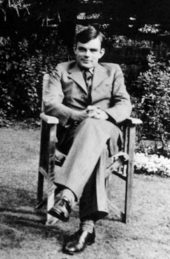It is more than thirty years since I first heard of a small group of German army officers rising up against Hitler in the dying days of the Nazi regime. I was a foreign correspondent sent to Berlin within days of the Wall being torn down, and had been tracking the rise of neo-Nazi groups springing up in covert, underground cells across the forlorn expanses of the overnight defunct German Democratic Republic.
Curious to know more about rebel soldiers staging a putsch in Munich, the ‘cradle of the Nazi-beast’, I looked for a trail…. but found no record and it remained a hasty scribble in a notebook until three decades later when I picked up the autobiography of BBC war correspondent Noel Newsome published by historian David Boyle. The rebel soldiers – Newsome had met them – sprang from its pages like ghosts.
Moreover, the story was just as told to me – the tale of how a small band of resistance fighters, equipped with little more than bicycles and spare rifles, rose up against the Nazis, rallied thousands to their cause and saved Munich from destruction both by Hitler’s Nero Decree and by the advancing Allies.
By secretly transforming his small unit of army translators into a fighting force and seizing control of a radio station, Gerngross, an unlikely, bespectacled hero, saved many lives in the city.
Newsome had been one of the first to hear their mysterious night-time rallying cries urging Germans to rise up against Hitler…..broadcast astonishingly from within Germany. He followed newspaper reports of ‘living Germans, who had risked their lives fighting Nazis on the streets of Munich’ and interviewed their leader: Rupprecht Gerngross.
The coup was daring, ingenious but short-lived and had dreadful unintended consequences. Gerngross had not reckoned with betrayal, nor the ferocity of Nazi troops sworn to fight to the death. In the 48 hours it took for U.S. troops to reach the city, fanatical ‘last gasp’ Nazis exacted a brutal revenge.
Gerngross’s co-conspirators had forged links with Claus von Stauffenberg, who fatally rejected their arguments that a plot to assassinate Hitler with a bomb hidden in a briefcase was too risky. His bravery along with that of failed Bierkeller assassin Georg Elser are feted today. Yet Gerngross died a forgotten hero.
The account Newsome wrote for The Times never came to light because it was pulled from the presses by wartime censors, who thought it “undesirable” to suggest there were “good Germans”. It was in turn covered up by the U.S. military occupation, who did not believe any German was truly opposed to Hitler, and finally, generally abandoned to obscurity by the Germans themselves, eager to forget the horrors of the war and move on.
Consequently little became known about the “only successful military putsch against the Hitler regime”. Only on his death, when his widow donated his personal letters and documents to state archives, could the story finally be pieced together and told in Saving Munich 1945: the story of Rupprecht Gerngross
The book offers an insight into the often-forgotten chaos of the aftermath of the war and sheds light on lesser-known Nazis who seized power as Hitler lay dying in his bunker such as Gauleiter Paul Giesler, whose inflammatory speech provoked White Rose students Sophie and Hans Scholl to take the risks that led to their death.
It describes the horror witnessed by author J. D. Salinger, who, as a 26-year-old US counter-intelligence officer from a Jewish family, was among the soldiers who stumbled across piles of burning corpses in Dachau sub-camps as the Nazis fled. Salinger, who was hospitalised for several weeks at the end of the war, said he never completely recovered.
The book contains photographs of some of the 6,000 mainly Jewish prisoners, left freezing, dazed and confused after their Nazi guards abandoned their ‘death march’ through deep snow, having heard Gerngross’s radio broadcasts.
The dissemblance needed to embrace the opposing demands of fulfilling daily the almost cult-like duties of serving in Hitler’s army while secretly revelling in every hidden rebellious act against it, seems beyond a paradox mindset.
One of Stauffenberg’s co-conspirators, Axel von dem Bussche spoke of a ‘Lady Macbeth-like’ horror of feeling his Nazi uniform was a “stain on his skin”.
But though Gerngross felt the ‘drip of disgust’ as Nazi indoctrination tightened its grip on all around him, he never gave up – and his story of unwearying persistence, about wriggling through the cracks of a totalitarian regime’s armour to achieve some small expression of defiance, contains important lessons for today.
Lesley Yarranton is the author of Saving Munich: The Story of Rupprecht Gerngross, published by The Real Press.







